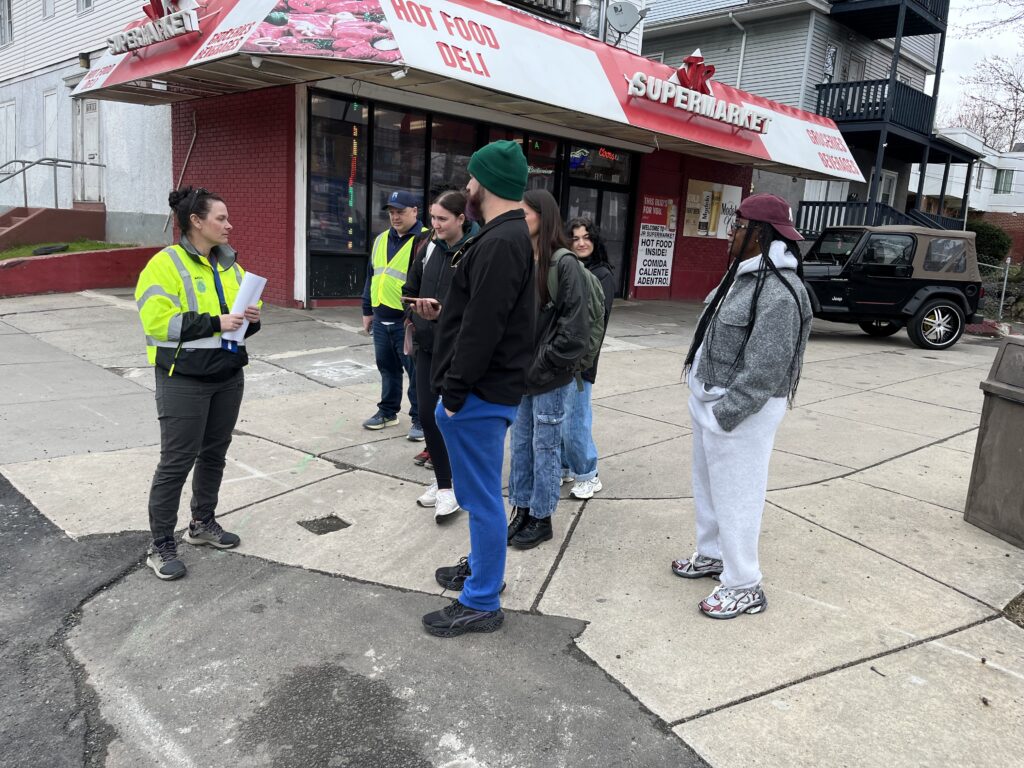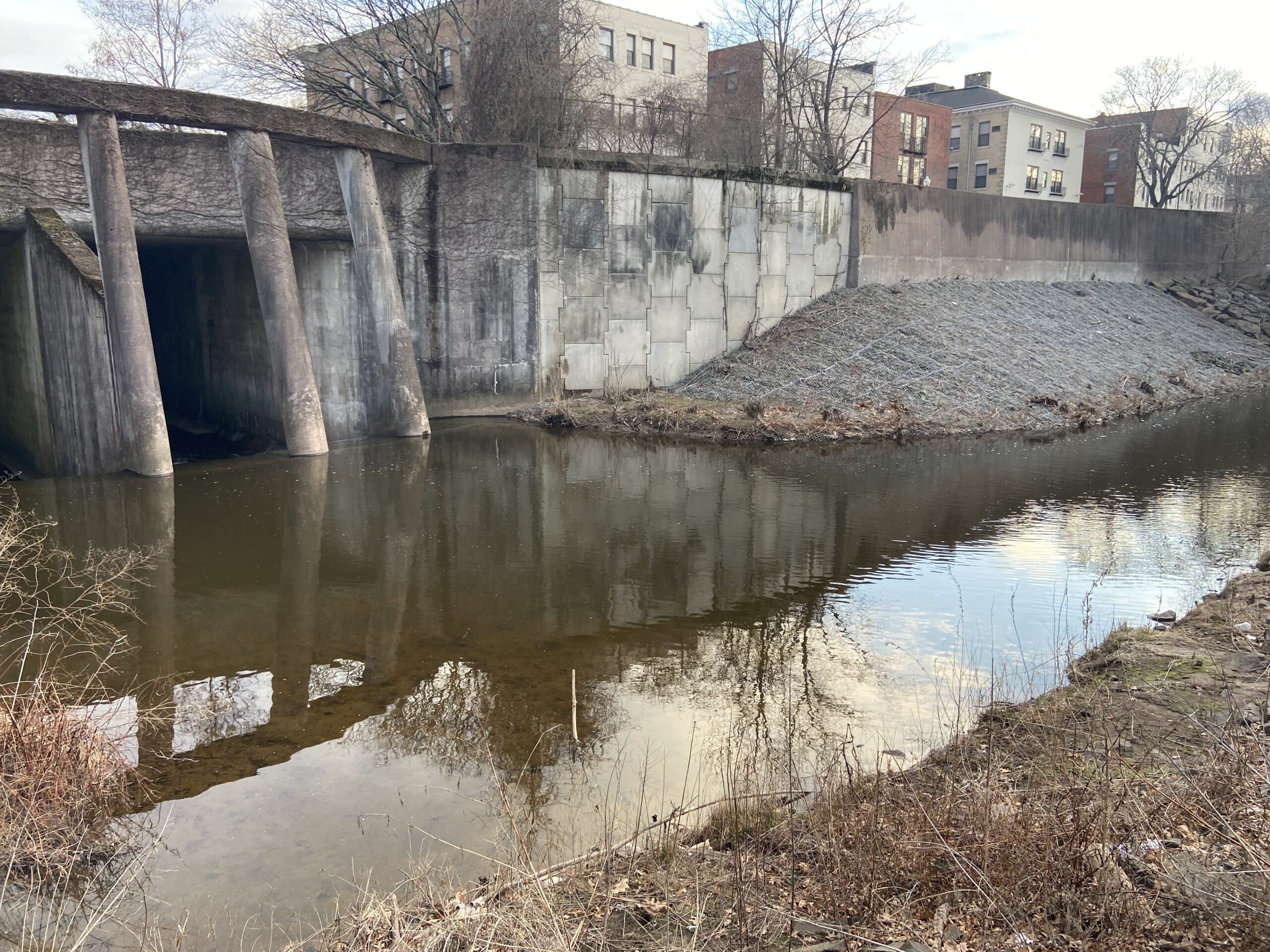By Desirae Sin
UConn Journalism
The city of Hartford has dealt with flooding and sewer overflows ever since the mid-1800s, when the city became a highly populated area. The sewage infrastructure dates back to the 1870s, and many parts of it have remained the same since then.
To Hartford residents this is nothing new. Climate change has created instances of heavier rainfall and more severe weather in the past quarter century. Dense cities like Hartford suffer the consequences of human activity through these extreme storms.
Hartford’s sewer system was designed to collect both sewage and stormwater together, meaning the system can be overwhelmed and must repel the excess water directly into rivers, so that it will not overload the sewage treatment plant in the South Meadows area of the city.
“A CSO, or a combined sewer overflow, is basically a relic of the way cities were built starting back in the 1800s,” Michael Dietz, extension educator at the University of Connecticut and director of the Connecticut Institute of Water Resources, said.
The Metropolitan District Commission (MDC) and the state Department of Energy and Environmental Protection (DEEP) have been updating the sewage system since the late 20th century.
But who is liable for Hartford’s flooding? It’s caused millions of dollars in property damage and negative environmental effects.
In January of this year, the city of Hartford and the MDC signed a memorandum, in which both organizations would help manage the impacts of stormwater flooding and polluted bodies of water.
In the agreement, the city and the MDC promise to work together to keep flooding to a minimum, working together to clear storm drains and culverts and to prevent and stop illicit dumping of substances into drains. The agreement lays out that the city is responsible for street clearing and the MDC is responsible for maintaining the pipes and upgrading them. The MDC has been under a consent order with the state since the mid-1990s to separate some parts of the stormwater pipes from sewage pipes, and to upgrade many other areas.
While the MDC and DEEP are continuing to update the system, the MDC is not a flood control agency. It is a non-profit corporation that provides drinking water and sewage treatment. The Connecticut General Assembly chartered it in 1929.
The MDC operates and control sewage plants in the Hartford area, the biggest being in South Meadows. But the sewer systems date back to the 1850s. As the population grew the city decided actions had to be taken to ensure public health. More people meant more waste.
Mary Looney, who worked as a municipal stormwater educator for the Nonpoint Education for Municipal Officials (NEMO) program at the University of Connecticut’s Center for Land Use Education and Research, said that managing stormwater that mixes with human waste is very important. “Generally, exposure to sewage can be really dangerous,” said Looney, who today works as a sanitation inspector for the Bristol-Burlington Health District.
“E. coli and the different bacteria and viruses that we shed in our sewage—if you come in contact with that, that can then enter your body and you can get very sick with gastrointestinal illnesses,” she said.
While most bacteria are harmless and within our intestines, harmful versions of it can cause infections through “contaminated food or water or contact with animals, environments, or other people,” according to the Center for Disease Control and Prevention website.
Looney noted that the reason municipal and state health officials test swimming areas from Memorial Day to Labor Day is that they don’t want people to come in contact with disease-causing bacteria.
Although the MDC is not liable for private property that floods, spokesperson Nick Salemi said the agency has received funding from the state’s Clean Water Fund and has started making improvements to the parts of the system that go from the street to people’s homes.
“The big change was to be able to do the private property improvements to people’s homes,” Salemi said.
A lot of this work is funded by the state. The Clean Water Fund is DEEP’s financial assistance to cities and towns. State funding is the main driver for sewer separation all over Connecticut, and Connecticut was the first state to introduce a bill geared towards clean water.

In 1967, DEEP states in a history on its website, the state created its Clean Water Act. Three years later, the federal government set water quality standards. The federal Clean Water Act was adopted in 1972. DEEP is charged with enforcing the federal law.
“Folks should know that the federal Clean Water Act is modeled after Connecticut’s Clean Water Act, which proceeded the federal law,” said Graham Stevens, chief of the Bureau of Water Protection and Land Reuse at DEEP. “We have overlap in jurisdiction as it relates to implementation.”
Hartford isn’t the only dense city in Connecticut dealing with the repercussions of ancient infrastructure.
“Some of our older cities like Hartford, New Haven and Bridgeport have the combined sewer systems still,” Dietz said. When it rains is when these systems can become overwhelmed.
Although Connecticut was the first state to address the sewage issue, the MDC and DEEP predict that sewer separation and upgrades in Hartford won’t be complete until around 2075.
It’s going to take more time and more money to complete the project. In the meantime, the state offered aid to residents in the North End whose properties were damaged by flooding. The state’s Hartford Flood Relief and Compensation Programs funded about $9 million in grants, but the funding ran out and the program paused in December 2024.
Madi Csejka, press secretary for office of State Comptroller Sean Scanlon, said that the office asked for $4 million to be allocated into the HFRCP this legislative session, so that the programs could continue.
TOP PHOTO: The Park River takes on combined sewage overflows in multiple places. Here it flows into the culverts under Farmington Avenue in Hartford’s West End. From here it will carry the river underground, still taking on overflows from storm drains. Photo by Justin Doughty
